|
Absolute Velocity Profiler (AVP) |
Deep Advanced Microstructure Profiler (DAMP) |
Electromagnetic Vorticity Meter (EMVM) |
||
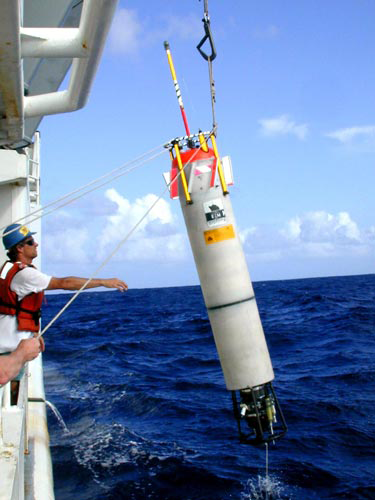
The AVP is a free-fall profiler which carries a variety of sensors which determine horizontal velocity, temperature, electrical conductivity, pressure, oxygen, optical transmissivity (turbidity) and the turbulent kinetic energy dissipation rate. Horizontal velocity is measured relative to an unknown but depth-independent constant using the voltage across the body induced by seawater's motion in the Earth's magnetic field. It is made absolute by measuring the Doppler shifts of bottom-scattered acoustic echoes when the AVP is within about 400 m of the seafloor. |

The Advanced Microstructure Profiler (AMP) is a lightweight, free-fall sensor system tethered to a ship by a Kevlar cable containing a flexible fiber-optic data link. AMP measures temperature, conductivity, pressure, microscale temperature gradients and velocity fluctuations. It was originally designed and developed at APL in 1981; several modifications have been made to it since then. Currently in use is the version called Deep AMP. |

The EMVM measures finescale velocity and vorticity in seawater based on the principles of motional induction. To accomplish this, it measures components of the gradient and Laplacian of the electrostatic potential field induced by the motion of seawater through an applied magnetic field. Other measurements are of temperature, conductant pressure, altitude and vehicle eorientation. The principal innovation is the development of a sensor for measuring small-scale vorticity. The vorticity sensors are usually carried on a heavy towed vehicle capable of vertically profiling to 200 m and at tow speeds of several knots. |
|
Expendable Current Profilers (XCP)/Expendable CTDs (XCTD) |
Lagrangian Float |
Modular Microstructure Profiler (MMP) |
||
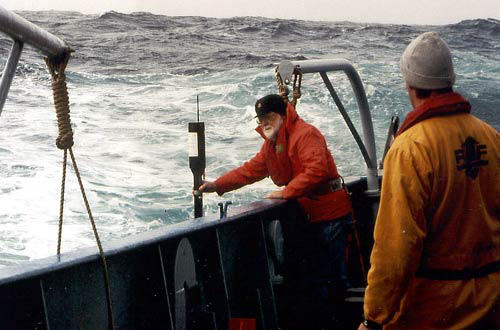
Rapid surveying from a ship underway with expendable current profilers (XCPs) and expendable CTDs (XCTDs) can obtain snapshots of oceanic vertical and horizontal structure on horizontal scales of 10's of kilometers before these fields evolve. XCPs measure velocity and temperature; XCTDs measure temperature and salinity. This approach allows dynamical studies of internal gravity waves (including near-inertial waves and internal tides), fronts, vortices (including rings and eddies), outflow plumes such as the Mediterranean Outflow and Denmark Strait Overflow, interactions with rough topography and atmospheric forcing. |
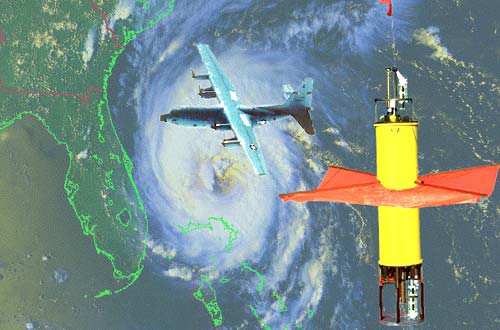
Lagrangian floats are designed to accurately track the three-dimensional movement of water parcels. A variety of different designs have been used since 1990 primarily to study regions of strong ocean mixing including hurricanes, deep ocean convection and local waters. New sensors are adding an ability to study biological productivity and its links with mixing. |

The MMP is a 2-m long, free-falling, loosely tethered instrument used to measure vertical profiles of temperature, conductivity, centimeter-scale vertical shear of horizontal currents and centimeter-scale vertical temperature gradients. While MMP is falling through the water column, data is transmitted up the twisted-pair cable to slip rings in the winch and then to a computer for display and data logging. |
|
Salinity/Density Probe |
Seaglider |
Shallow Water Integrated Mapping System (SWIMS) |
||
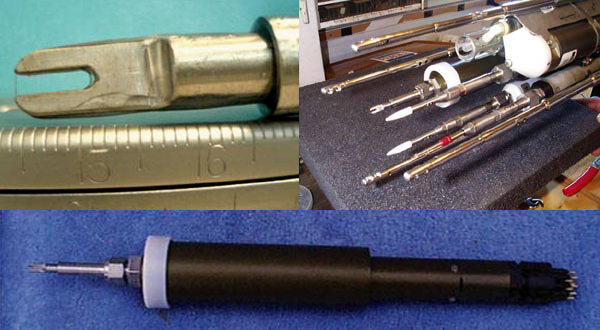
A new thrust in the department is the development of a prototype refractometer, which will provide a measurement of turbulent density/salinity in the ocean. Such data will allow a more complete scientific understanding of global circulation. In initial tests, the refractometer is proving to be many times more sensitive than previous ocean-going instruments of its type. |
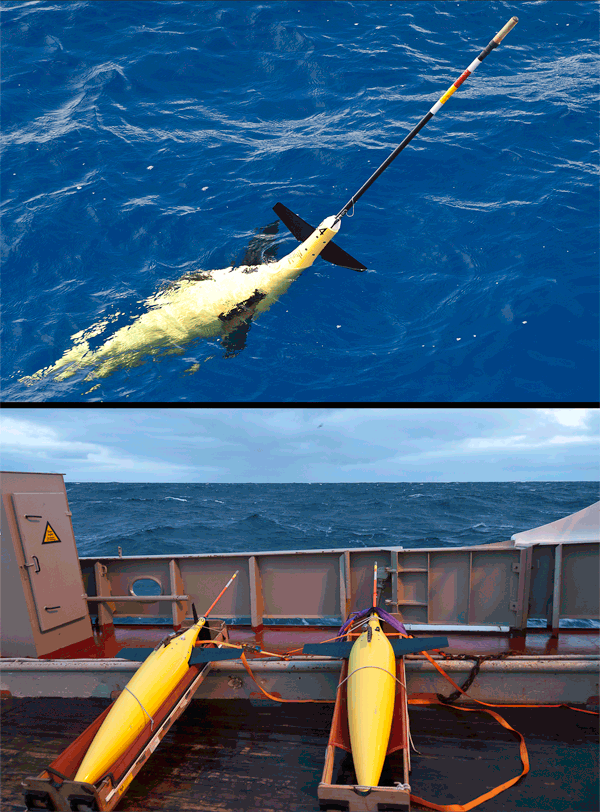
Seaglider is small, a long endurance, buoyancy-driven autonomous underwater vehicle. Gliders profile from the ocean surface to as deep as 1000 m, and can either navigate from waypoint to waypoint or hold station. Seagliders are commanded remotely and report their measurements via satellite telephone, providing real-time data return and flexible control. Seagliders carry a variety of physical and biogeochemical sensors and are capable of operating in harsh, remote conditions, including extended deployments in ice-covered oceans. |

SWIMS was developed for the study of coastal and estuarine environments. The system includes a Sea-Bird CTD (conductivity, temperature, depth) mounted in a towed body, an acoustic doppler current profiler, a BioSonics echosounder and GPS navigation. With this set of instruments, it's possible to collect data of sufficient resolution to observe features with horizontal length scales of 100s of meters and vertical scales of 10s of meters. |
|
Triaxus |
TriSoarus |
|||

Triaxus is a towed, undulating vehicle designed for making quasi-synoptic, high-resolution, three-dimensional surveys of the upper ocean. At tow speeds ranging from 2-10 knots, the vehicle profiles from the surface to 400 m with along-track horizontal resolutions of 3 km. Horizontal resolution can be increased by towing at slower speeds and limiting the maximum profile depth. The system also provides full lateral control, allowing the profiler to be operated outside the wake of the towing vessel for the sampling of surface intensified phenomenon such as buoyant plumes and shallow mixed layers. Triaxus provides flexible support for a wide range of payloads, including physical, optical, biological and chemical sensors, and the system has been designed to ease the integration of new instruments. The basic sensor suite includes a Seabird CTD, chlorophyll fluorometer, transmissometer and dissolved oxygen sensor, with a fiber-optic tow cable providing high-bandwidth telemetry. |
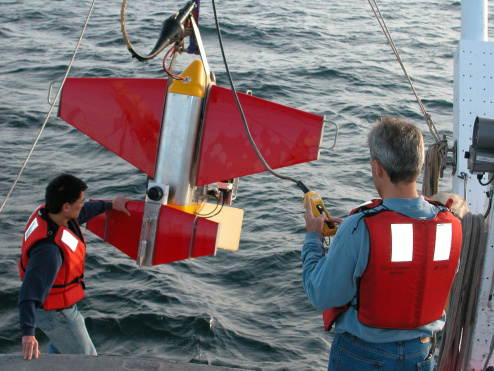
Like Triaxus, TriSoarus is a towed, undulating vehicle for high-resolution, three-dimensional surveys of the upper ocean. TriSoarus began life as a Seasoar vehicle, but has been heavily modified to increase profiling range on unfaired cable. Large symmetric foil section wings and a gravity driven roll stabilizing aileron, both designed by CSIRO, significantly enhance range and stability compared to a stock Seasoar. The actuator and telemetry system have been upgraded by adapting Triaxus components. Thus, the two vehicles have identical subsea and topside electronics suites, down to the software control algorithm. Instrument payloads are similar. Triaxus has slightly more overall payload space and its larger flight surfaces and active horizontal and roll control provide additional flexibility in profile shape and range. |
|


